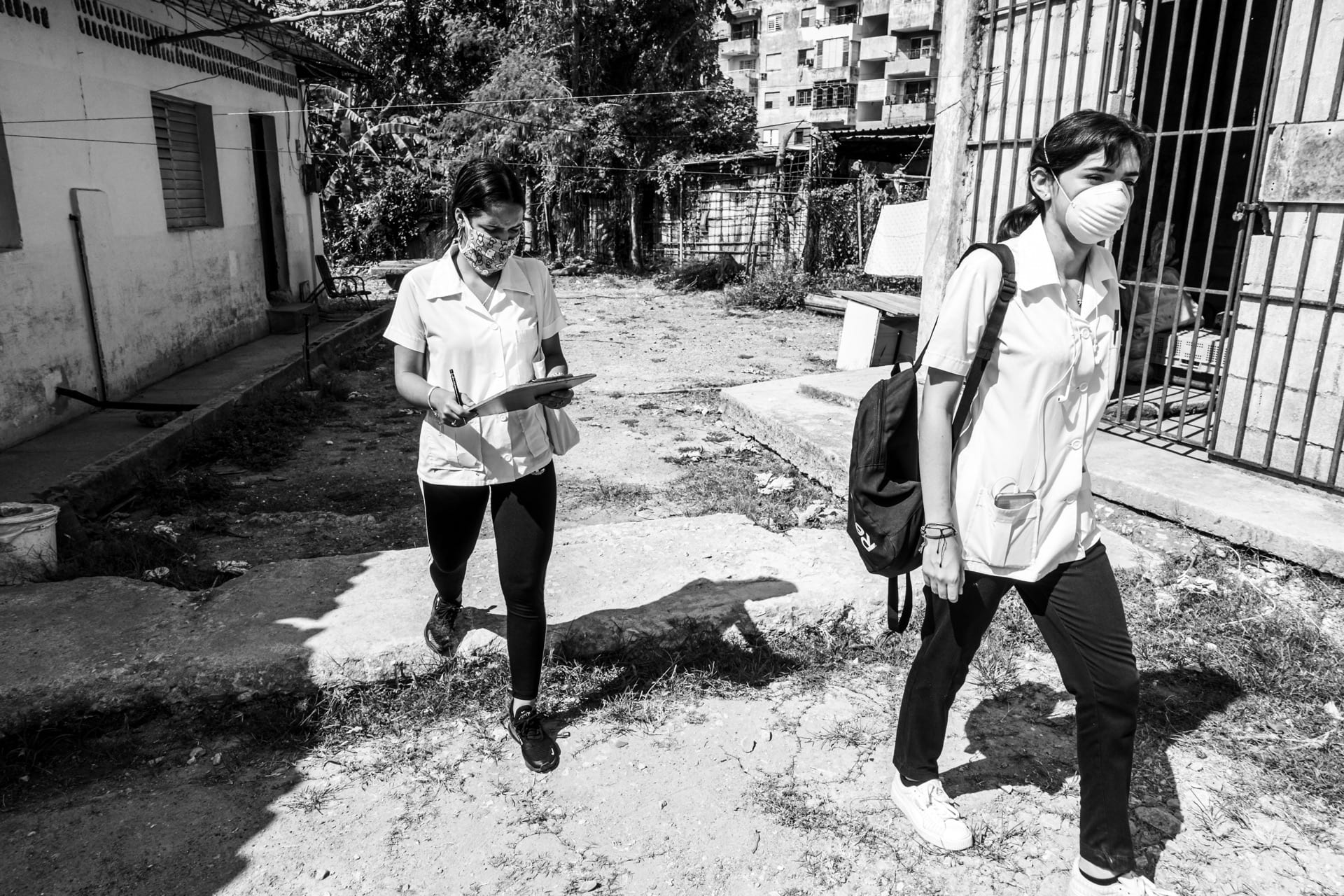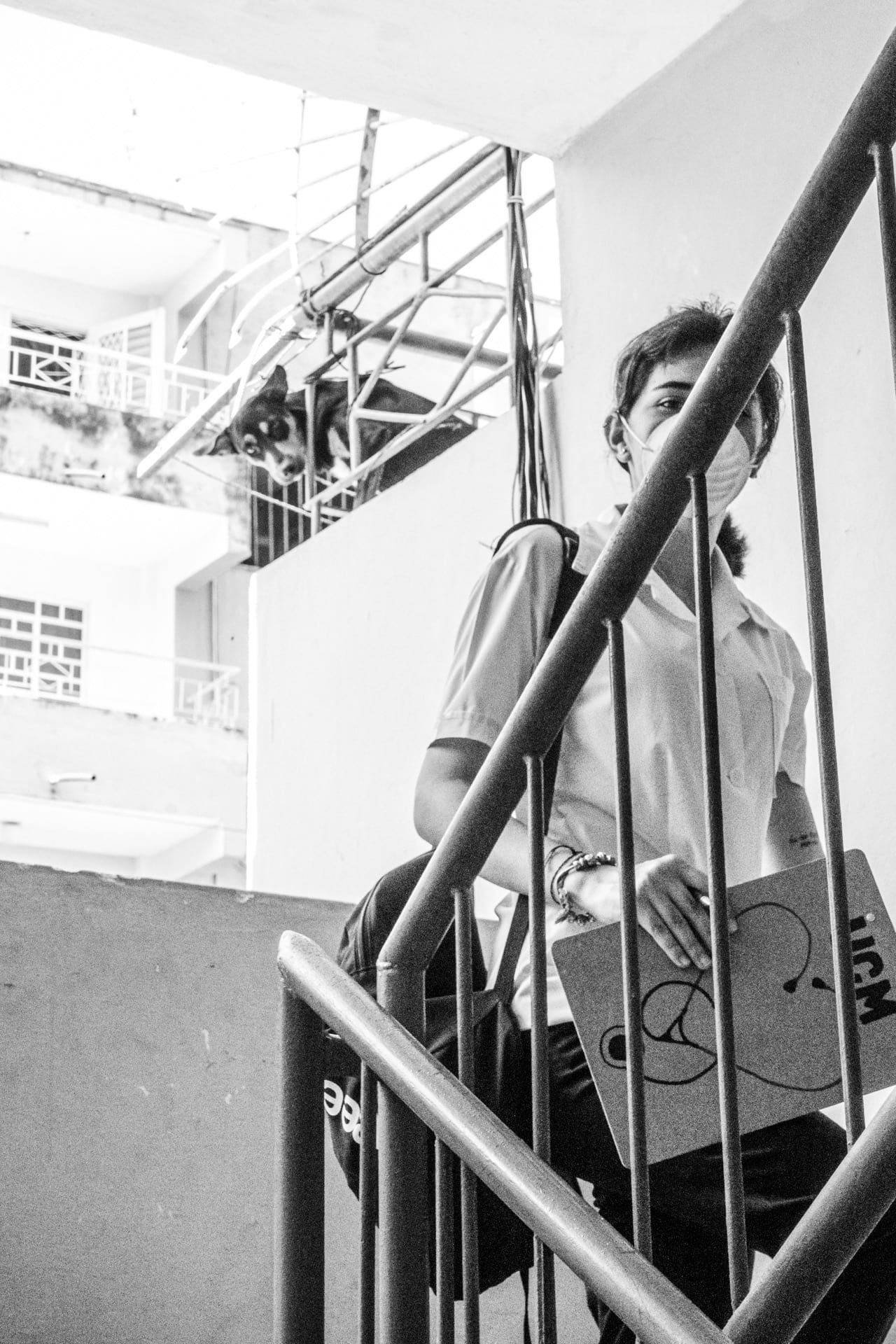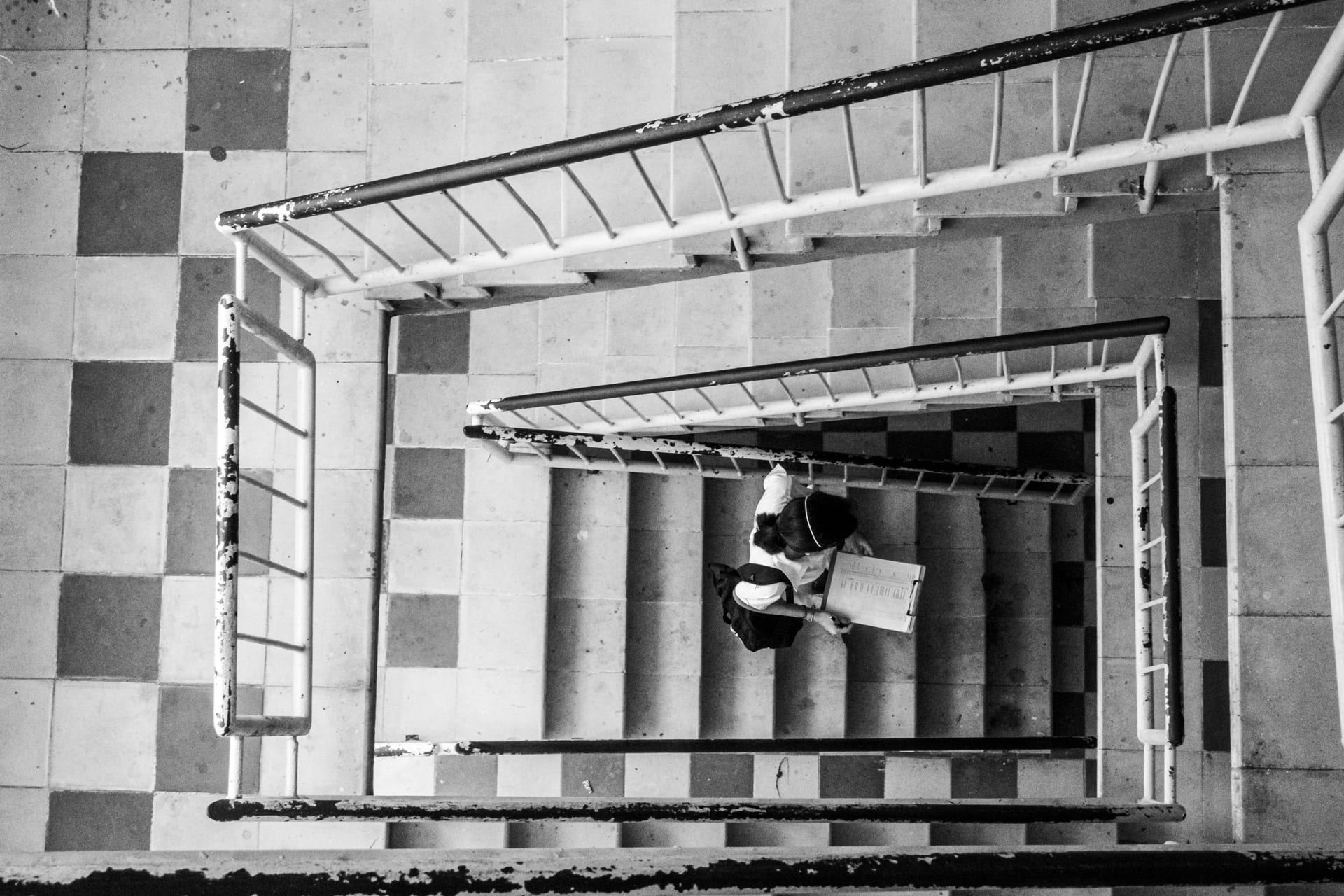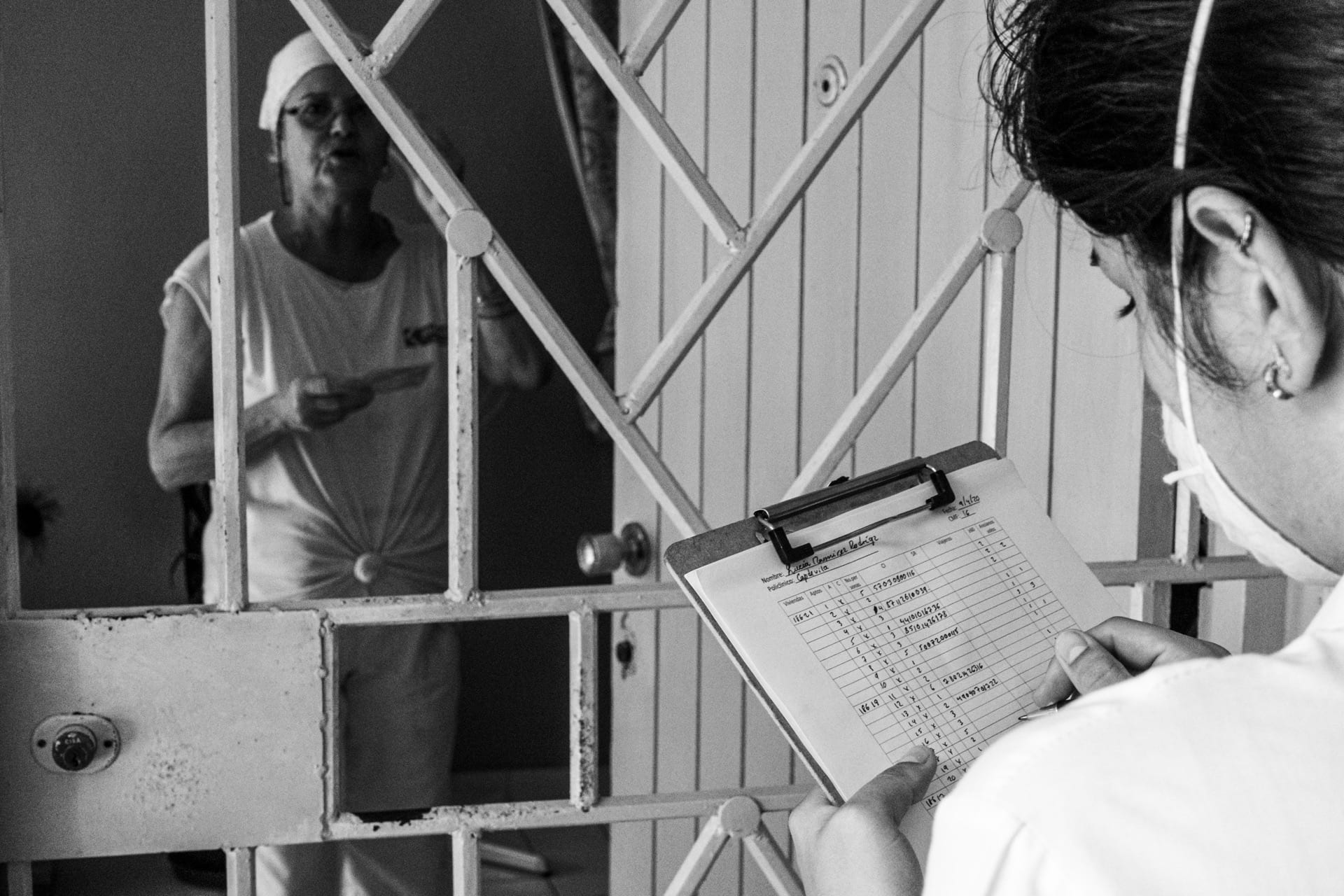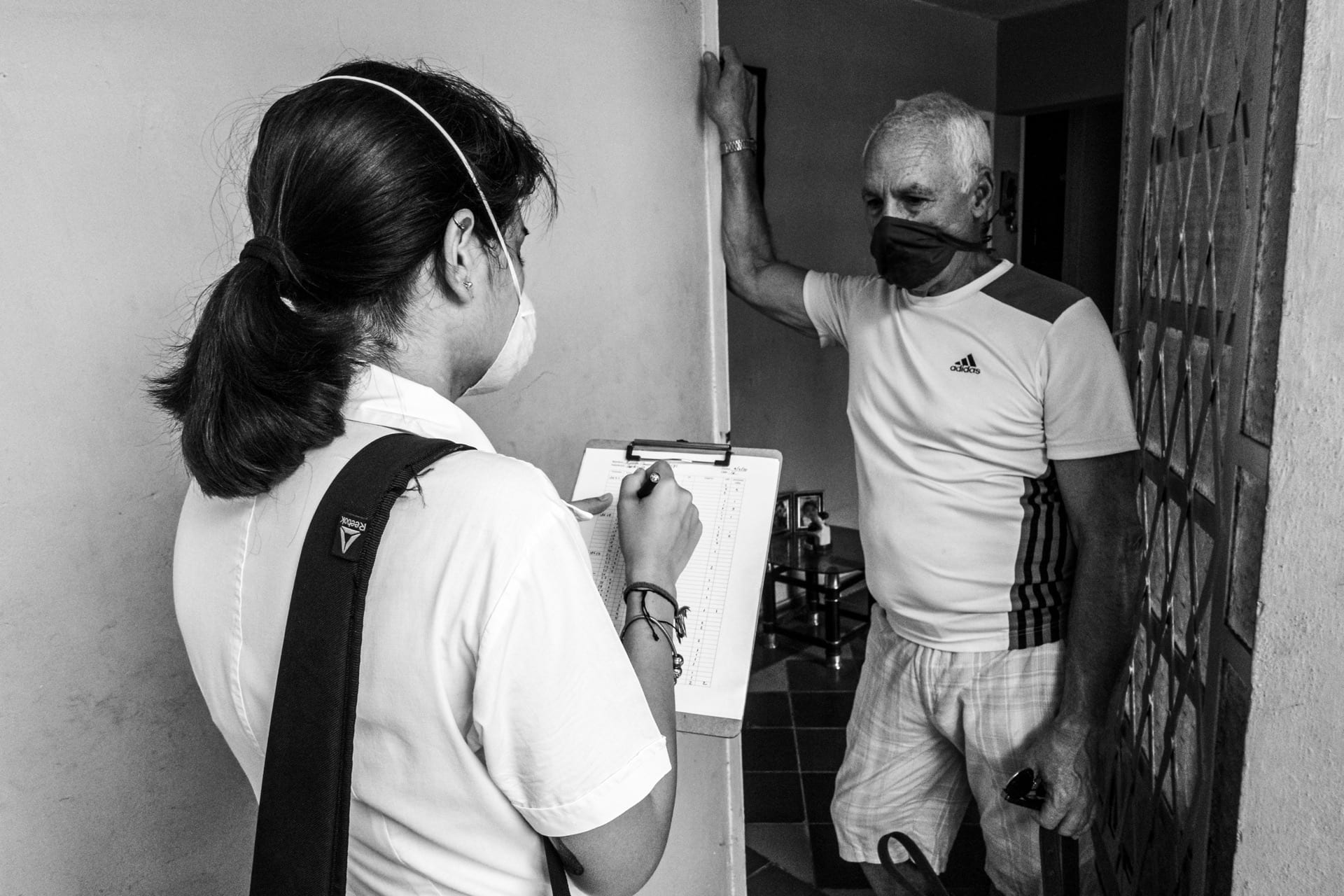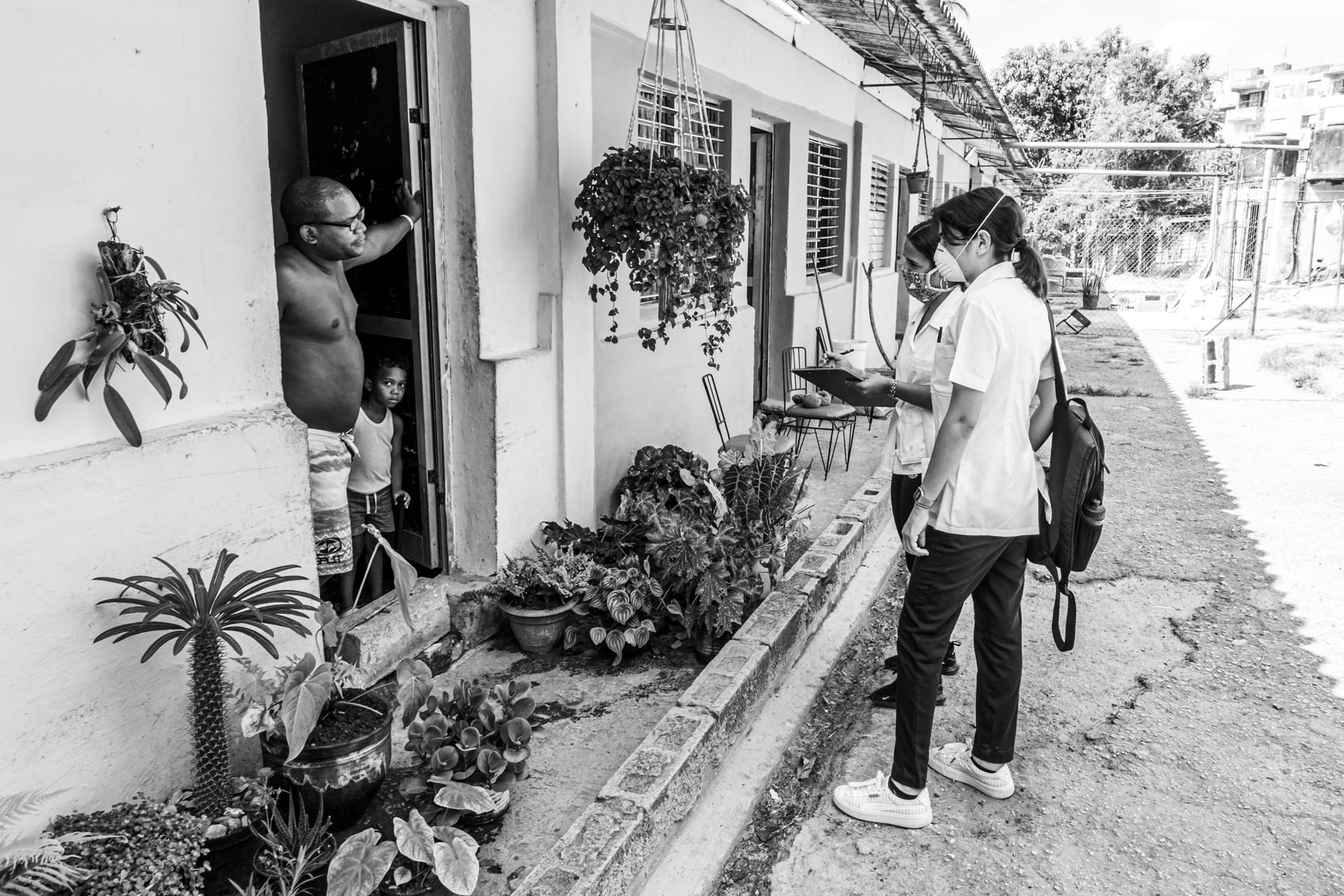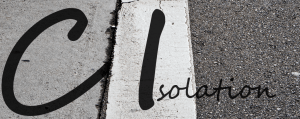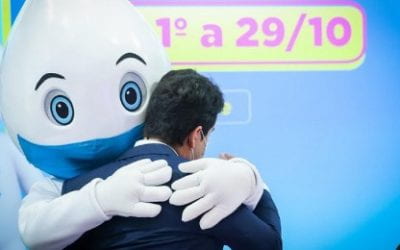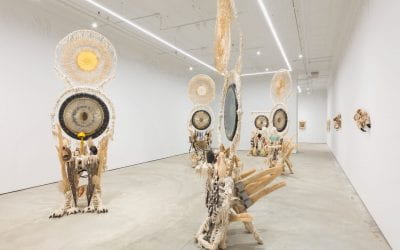The Heart in the Vanguard
The photos of David Estrada Rodríguez were chosen for the exhibit “Documenting the Impact of Covid-19 through Photography: Collective Isolation in Latin America,” curated in collaboration with ReVista and the Art, Culture, and Film program at Harvard’s David Rockefeller Center for Latin American Studies (DRCLAS.)
The exhibition, based on an Open Call for Photography launched in July 2020, aims to create a critical visual record of our unprecedented times so they can be remembered by future generations.
These photographs were taken in the neighborhood where I was born, Altahabana in the city of Havana, Cuba. I went out to accompany medical students two days in a row, first, close to an hour going up and down five flights of stairs in two buildings with 30 different apartments and then a kilometer away in a small community of five houses.
Students from all the areas of medical sciences were called upon to collaborate with the Public Health Ministry to detect possible cases of Covid-19, a disease sadly robbing as many headlines as it is life. The Cuban strategy does not wait until the victims arrive at hospitals; it develops a preventative house-by-house search for cases of contagion.
Some of the aspiring doctors were still only 18 years old and had been studying only a few months. But there they were, on the front lines, where they were most needed. The routine is daily and because of that fact, risky. It is well known that everyone’s sanitary conditions are not the best, and that complicates the task, but one must go on. Every day, the students have to get up early, put on their uniform and mask—and if possible, gloves and hat—and go on out into the neighborhoods.
A team of two students are responsible for surveying 130 homes. They arrive at the neighborhood around 9 a.m. The neighbors are already waiting for them; it’s a new habit. Some, anxious because they live by themselves and it’s the only opportunity to talk to someone else in the entire day, now that they can hardly go out.
The students go from house to house, up and down staircases, to ask how people are feeling and if they have have any Covid-19 symptoms and also to answer any questions people pay have about the coronavirus. They take the necessary precautionary measures, which means they have to turn down offers of water or coffee that the neighbors hospitably offer in order to preserve social distancing and avoid touching shared surfaces and objects.
Before 1 p.m., they’ve reported back to their zone’s polyclinic, but their work does not end there. They return home, and without greeting anyone in thir family, they go directly to wash their hands, take off their clothes and work gear and disinfect them, bathing themselves from head to foot to eliminate any possible contact with the virus. And they go on with their day and their studies, because they cannot abandon their books in spite of the situation. And at 9 p.m., they applaud from their balconies, along with everyone else in the neighborhood, for the doctors and, yes, for themselves.
One of the apartment buildings they have to survey used to be a local elementary school. Every door opened to a class of 20 children. Those that live there today arrived in Havana several years ago from other provinces during their vacations (a time when schools were closed and empty) and took over the building for their own use. Although they have no legal rights to occupy the building, they are not ignored in this health crisis; on the contrary, they are considered and attended to at the level of Primary Health Attention with the same care as the rest of the population.
The idea of a series of photographs arose after learning about a wave of disinformation and fake news providing a distorted image in social media about the intent of the house-to-house visits; I found out about these rumors through discussions with relatives who live outside of Cuba. After I got to talk with the medical students, I realized how far these rumors were from the reality and decided to create a photoessay to show the story from my perspective.
- A la vanguardia va el corazón. _DSC0650
- A la vanguardia va el corazón. _DSC0644
- A la vanguardia va el corazón. _DSC0635
- A la vanguardia va el corazón. _DSC0615
A la vanguardia va el corazón
Por David Estrada Rodríguez
Las fotos de David Estrada Rodríguez fueron seleccionadas para la exposición, “Documentando el impacto de Covid-19 a través de la fotografía: Aislamiento colectivo en Latinoamérica”, auspiciado por ReVista y el Art, Culture, and Film program del David Rockefeller Center for Latin American Studies (DRCLAS) de Harvard.
La exposición, resultado de el concurso de fotografía anunciado en Julio 2020, busca crear un registro visual de estos tiempos sin precedentes y contribuir a nuestra futura memoria histórica.
Las fotografías fueron tomadas en mi barrio natal, Altahabana (La Habana, Cuba). Salí a hacer el recorrido de las ¨pesquisas¨ dos días seguidos, fue cerca de una hora subiendo dos edificios de 30 apartamentos repartidos en cinco plantas y luego una pequeña comunidad a un kilómeter de distancia de cinco casas.
Estudiantes de todas las áreas de Ciencias Médicas fueron convocados a colaborar con el Ministerio de Salud Pública en la detección de posibles casos contagiados por la Covid-19, enfermedad ¨de moda¨ en estos días que tristemente se ha robado tantos titulares como vidas. La estrategia cubana no espera a que los contagiados lleguen a los hospitales; desarrolla una búsqueda preventiva casa por casa.
Algunos de los aspirantes a médicos tienen todavía 18 años y llevan apenas meses en la carrera. Pero están ahí, en primera fila, donde se les necesita. La rutina es diaria y, por tanto, riesgosa. Es conocido que las condiciones sanitarias en todo el mundo no son las mejores y complican más la tarea, pero toca seguir por el resto. Toca levantarse temprano cada día, ponerse el uniforme y el nasobuco – de ser posible hasta guantes y gorra – y salir a allá fuera.
Les corresponde pesquisar 130 hogares entre dos estudiantes. Van llegando al barrio a eso de las 9 a.m. Ya los vecinos los esperan; es la nueva costumbre. Algunos, ansiosos pues viven solos y esa la única oportunidad que tienen para conversar con alguien más en el día, ahora que no deben salir a menudo.
Los estudiantes van de casa en casa, subiendo y bajando escaleras, a preguntar a cada uno cómo se siente y si presenta algún síntoma, a aclarar las dudas que van quedando sobre el famoso coronavirus. Cumplen las medidas de precaución necesarias, lo que implica tener que rechazar a los vecinos un poquito de agua o de café por mantener el distanciamiento y evitar tocar superficies u objetos comunes.
Llevan el parte antes de la 1 p.m. al policlínico de su zona, pero el trabajo no termina ahí. Regresan a sus hogares y, sin saludar a nadie de la familia, van directo a lavarse las manos, a quitarse y desinfectar sus ropas y utensilios, a bañarse de pies a cabeza para eliminar cualquier posible contacto con el virus. Y continúan con sus días y con sus estudios, porque no pueden dejar los libros atrás a pesar de la situación. Y a las 9 p.m. aplauden junto a todo el vecindario desde los balcones, por los médicos y por ellos mismos.
Uno de los inmuebles que les corresponde pesquisar fue originalmente una escuela primaria local. Cada puerta abría a una clase de unos 20 niños. Los que hoy viven ahí llegaron a la capital hace algunos años desde otras provincias durante las vacaciones (periodo en que las escuelas están cerradas y vacías) y ocuparon el inmueble. Ellos, aun sin derechos legales que los ampare, no son ignorados durante la compleja situación sanitaria; por el contrario, son considerados y atendidos por el nivel de Atención Primaria de Salud con el mismo reparo que al resto de la población.
La idea de la serie fotográfica surge luego de una ola de desinformación y noticias falsas; se le estaba dando la imagen incorrecta a la tarea de las pesquisas en las redes sociales, me entero de esto luego de un debate con familiares que viven fuera de Cuba. Al informarme más acerca del proceso mediante una corta entrevista con los estudiantes me doy cuenta de lo distantes que estaban las realidades y decidí realizar el fotorreportaje con el fin de exponer mi versión de la situación.
- A la vanguardia va el corazón. _DSC0650
- A la vanguardia va el corazón. _DSC0644
- A la vanguardia va el corazón. _DSC0635
- A la vanguardia va el corazón. _DSC0615
David Estrada Rodriguez is a Cuban photographer.
David Estrada Rodriguez es un fotográfo cubano.
Related Articles
Brazil’s Vaccinated Democracy
In March 2021, former Brazilian president Luiz Inácio Lula da Silva, a current presidential candidate, posed a pointed question in a speech lambasting President Jair Bolsonaro’s Covid-19 response. “Where is our beloved Zé Gotinha?” Zé Gotinha is not a respected public health expert or crisis manager
Broken Land: Climate Change and Migration in Guatemala
Broken LandClimate Change and Migration in Guatemala Santos Istazuy Pérez (right) sits in meditation during a group hike and workshop at a lush farm along with fellow Guatemalans and like-minded people from around the world including Germany and Uruguay. Photo by...
The Gift of Art
My dear friend, Colombian pioneer performance artist, Maria Evelia Marmolejo, (Cali, Colombia, 1958) whom I met during the research for the exhibition Radical Women: Latin…

